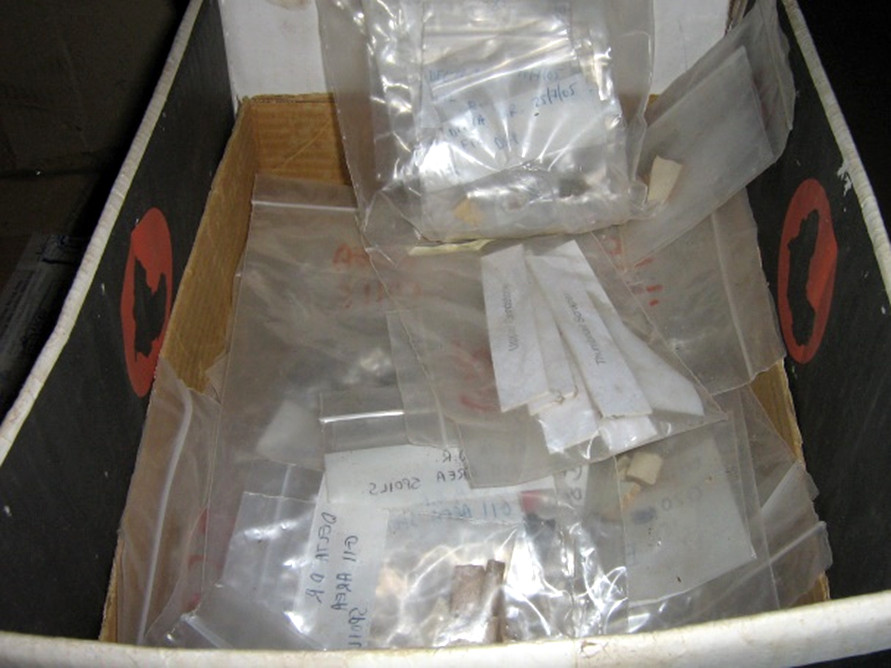|
Storage | Exhibitions | Examples
What we need to know about Preventive Conservation
|
The long-term preservation of all types of cultural collections is essential so that they may be safely used for research, education, exhibitions and enjoyment.
Too often valuable, irreplaceable material is lost through neglect.
The cultural value of objects can be explained, from a conservator's perspective, as containing knowledge in their very fabric and should be preserved intact, so that this knowledge can be gleaned now, or in the future.
If objects are unique and irreplaceable, then not preserving them means a permanent loss of knowledge. Also, according to the ethics of conservation, if those objects are not preserved, their inherent authenticity as a tangible link with the past, will be lost.
The service I offer as a Preventive Conservator involves doing everything possible for museum, archives, public and private collections, through careful observation of the whole environment in which they are housed. This will prevent damage and deterioration of objects caused by adverse environmental conditions, incorrect handling, as well as their inherent physical structure.
My first task, is to assess the environment in which objects and collections are housed. It is essential to understand, control, or eliminate the factors that cause damage and deterioration, such as visible light, ultra-violet radiation, humidity, temperature, biological pests, dust and pollutants, and physical damage. Damage and possible destruction of the collections will therefore be significantly reduced.
It will also ensure that good handling, storage and display methods are used to preserve these collections for the long-term.
|


|
Storage
 |
 |
Stored gourds and axes, with accession numbers visible.
|

Furniture stored on pallets for safety. |

Xylophone packed, ready for transport to new storage facility. |
Exhibition
 |
 |
 |
| Display methods for various kinds of objects. |
As a Preventive Conservator I am able to recommend treatments designed to support, clean, stabilise, consolidate, or strengthen objects. In this way vulnerable objects can be preserved without using potentially damaging restoration techniques. Only stable, reversible materials are recommended, and their application will be carefully recorded.

Removing chandelier for temporary safe storage. |

Marking cotton tape with accession number, to attach to textiles or beadwork. |
 |
 |
| Vacuuming off insect carcasses, from insect-damaged objects made of wool and furred skin. |
 |
Cleaning copper and brass objects that are on open exhibition. |
By definition, museums have four functions - they collect, conduct research, present, or interpret collections through exhibition, and, most importantly, they preserve.
Preservation is the most fundamental of these responsibilities, since without it research and exhibitions are impossible, and collection is pointless. Museums, therefore, have a vested interest in preserving their collections, and preservation is a primary mandate of most museum policies.
Every activity that affects cultural collections physically, concerns the Conservator, and particularly the Preventive Conservator, far more directly than the Curator, Researcher, or Exhibition designer. It will always be very important for all the role players, to, jointly and equally, contribute to all decisions regarding the use of the collections.
Examples of where intervention will be necessary, using the preventive conservation approach
Preservation of information is critical for archives. Records may be preserved by copying them into a different medium, or onto more durable material, thus preventing on-going handling of the originals.
Archival material, such as documents, books, maps, need support and protection.
 1 1 |
 2 2 |
 3 3 |
Documents (1,3) vulnerable to physical damage because of unsuitable storage. Book (2) with silver decoration on cover, in need of restoration as a conservation technique.
|
Objects that have been excavated, from in the ground, or on the surface, may contain valuable evidence for research, making it unacceptable to add any foreign material, clean, or even handle them. The best form of preservation in this case, would be to design and build special, non-contaminating, but accessible, containers for the archaeological material.
 1 1 |
 2 2 |
 3 3 |
 4 4 |
| 1, 2 and 3: Archaeological material needing storage containers that do not damage the artefacts, so that it is more easily accessible for research purposes. 4: A method of protecting rock paintings and engravings from dust. |
Preservation of heritage objects is not an end in itself, it serves to maximise over time, access to the information encoded within them. While all museums, and other heritage institutions, are concerned with information, their collections are of value and are worth preserving, mainly for the information they contain.
|




















